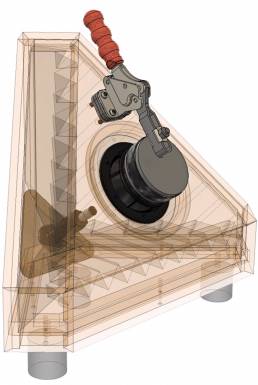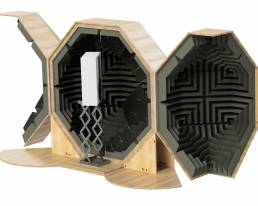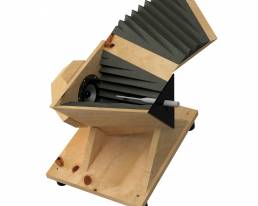
How to solve your loudspeaker testing problems
The weakest link in your measurement chain is your chamber, the new TTC chambers solve these problems...
- Anechoic chambers have massive footprints:
The TTC gives you equal or better results with a compact footprint - Achieving repeatable measurements is difficult in an anechoic chamber:
The TTC guarantees the microphone and loudspeaker positions - Anechoic chamber accuracy suffers at low frequencies:
The TTC is capable of measuring below 20 Hz - Results are not transferable between most test chambers:
The TTC meets international standards IEC 60268-21:2018 & IEC 60268-22:2020 - Most chambers are difficult to calibrate and awkward to use:
The TTC is calibrated and is ready to interface to your microphone and analyzer
The TTC establishes a new normal for R&D and production line loudspeaker testing
After an exhaustive peer review the concept has been included as part of IEC 60268-21:2018 & IEC 60268-22:2020, and AES73id-2019.
The TTC delivers results better than +/-0.5dB 20Hz to 20kHz to a 95% confidence level.
Find out how affordable it is!
Please fill this form to see the pricing of the TTC chambers
Repeatable results
- Results typically repeatable within +/-0.25dB (20-20kHz)
- Controlled distance between the loudspeaker and the measurement microphone
- Tetrahedral shape eliminates standing waves ensuring consistent low frequency response
Accurate results
- Fixed environment which guarantees the measurement accuracy
- Controlled pressure and high frequency environment ensure accurate wideband frequency response (20-20kHz)
Transferrable results
- Tetrahedral structure and calibration of the TTC ensures transferrable results between chambers
- Meets IEC 60268-21-2018, IEC 60268-22 ED1, and AES 73id-2019 standards
For more information watch this episode of the THD Podcast in which the TTC solution is explained in detail.
Chamber types
Are you testing complete loudspeaker cabinets, microphones or want to do polar measurements? Check out the other chamber types.


